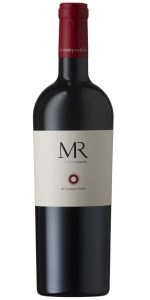Wine from Stellenbosch

Located in South Africa, Stellenbosch is a very important district. Just 30 miles east of Capetown, Stellenbosch is the second oldest settlement in the country. The wine producing wards are Simonsberg-Stellenbosch, Jonkershoek Valley, Bottelary, Banghoek, Dvon Valley, Papegaaiberg, and Polkadraai Hills.
Stellenbosch was nicknamed, “The City of Oaks,” because of the oak trees that were planted by Simon van der Stel who founded Stellenbosch and was the mayor of Cape Town. The well-drained terrain is hilly with the majority of vineyards located at 330 Feet above sea level. The Cape Fold Mountain range shelters the valleys. The first wine vineyards were planted by German settlers, known as Huguenot, in 1690.
The climate in Stellenbosch is Mediterranean and perfect for viticulture. The winters are rainy, cool, and occasionally windy with daytime temperatures averaging about 61°. Occasionally snow flurries occur two or three times a year. Autumn and spring are considered shoulder seasons with average temperatures at the 68° mark. Summers are generally dry and hot.
The variety of soils in Stellenbosch range from decomposed granite on the hillsides, dark, alluvial soils that drain well in the valley. The combination results in high-quality red wines. Notable reds in the region include Shiraz, Pintoage, Merlot, and Cabernet Sauvignon. Prominent white wines include Sauvignon Blanc, Chardonnay, and Chenin Blanc.
Raats MR Mvemve Raats de Compostella is made from 63% Cabernet Sauvignon, 17% Cabernet Franc, 12% Malbec, 6% Petit Verdot, 2% Merlot
The name de Compostella (meaning “field of stars” or “compilation of stars”) was chosen to reflect the fact that each component is crafted to stand alone as a world class varietal wine. The wine exhibits a deep, dark ruby color. Blackcurrant and black cherry fruit with hints of violets, cedar and cinnamon are revealed on the nose. The palate is rich and complex with mineral, blackberry fruit and dark chocolate on the finish. The five Bordeaux varietals harmoniously convene in this consistent, linear flavor profile that is polished with a well-defined finish.
Review:
he 2020 De Compostella is composed of 30% Cabernet Franc, 28% Cabernet Sauvignon, 21% Malbec, 16% Merlot and 5% Petit Verdot. Beginning with a focused, juicy and complex nose of dark red fruits, the wine has impeccable balance between oak, fruit and earthy floral tones. Full-bodied and with succulent acidity, the palette offers a firm frame of fine-grained tannins, while the fruit profile makes way for elegant earth and notes of crème de cassis sway with subtle flavors of sage and spiced plum. The red blend continues to somersault and reveal its complexities over the long-lingering and ever-evolving finish. Be patient with this exceptional wine
-Wine Advocate 95 Points
- back
Selected Options
Regions
Categories
Pricing
Countries
Regions
Grape Types
Wineries
Organic/Free Shipping
Showcasing spectacular concentration and complexity, this wine offers remarkable depth and richness, with aromas of sun-drenched blackberry, briarberry, espresso, dark chocolate, cedar, and graphite. On the palate, the wine is framed by firm, mouth-filling tannins, and excellent structure that underscore opulent flavors of dark berry and spice.
Sitting just above the fog line, sheltered from the valley breezes, this distinct vineyard retains the heat from the early morning sun throughout the day and the additional warmth, paired with the vineyard’s shallow iron-rich soils, combine to create a distinctive flavor profile that is concentrated, complex and classically structured.
Luis XIV Brisat Orange Wine is made from 100% Merseguera.
Produced from old vines Marseguera (Gobelet / bush vines) with no irrigation and planted at 540 meters of altitude.
Intense yellow color, with orange reflections. On the nose it is very intense, with floral and fruity sensations reminiscent of a Mediterranean garden. In the mouth it has good tension, with medium tannins and very persistent aromas. Fine tannins.
It is a very intense white wine, which perfectly accompanies meat or fish-based rice dishes from Alicante, as well as different stews and seafood tapas.





